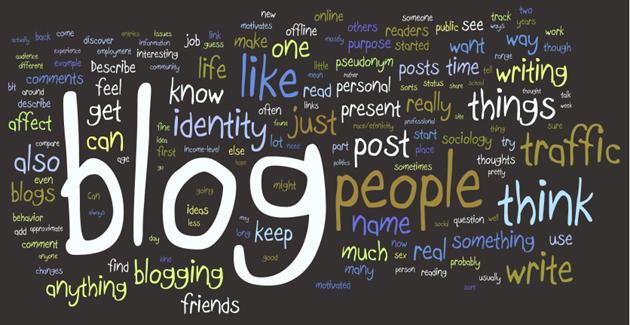 With the rapid rise of content marketing, time-pressed marketers know they have to get the most leverage out of each piece of content they produce. It’s difficult at best for marketing teams to continually pump out a high volume of quality content, so it’s important that the man hours and the budget that gets poured into content production really pay off. Building an organic following and readership through content production is certainly possible, but connecting your content up with third-party audiences is often quicker and more cost effective. Many businesses have turned to content syndication to get more exposure (and more sales leads) out of the content they’ve produced. Here’s a quick run-down of the three primary types of content syndication:
With the rapid rise of content marketing, time-pressed marketers know they have to get the most leverage out of each piece of content they produce. It’s difficult at best for marketing teams to continually pump out a high volume of quality content, so it’s important that the man hours and the budget that gets poured into content production really pay off. Building an organic following and readership through content production is certainly possible, but connecting your content up with third-party audiences is often quicker and more cost effective. Many businesses have turned to content syndication to get more exposure (and more sales leads) out of the content they’ve produced. Here’s a quick run-down of the three primary types of content syndication:
1. Pay-per-lead programs with whitepapers/eBooks
 One of the most popular forms of content syndication is pay-per-lead content distribution. In a nutshell – the content syndication vendor will promote the client’s PDF whitepaper/eBook (usually behind a lead generation form), and anyone who downloads the content is sent to the client as a sales lead. Most vendors who offer these services will charge on a cost-per-lead (CPL) basis. Costs can vary greatly depending on the program specs, selected audience filters, and the target lead volume.
One of the most popular forms of content syndication is pay-per-lead content distribution. In a nutshell – the content syndication vendor will promote the client’s PDF whitepaper/eBook (usually behind a lead generation form), and anyone who downloads the content is sent to the client as a sales lead. Most vendors who offer these services will charge on a cost-per-lead (CPL) basis. Costs can vary greatly depending on the program specs, selected audience filters, and the target lead volume.
You’ll find a variety of different vendors who offer services in this arena – everything from niche websites who cater to smaller, more targeted audiences to the Goliath content aggregators who control massive distribution networks including dozens of websites and email newsletters.
2. Lead Shares
Another popular form of content syndication is lead sharing. This type of program is more of a partnership than a vendor/client relationship. This type of “syndication” often happens between two affiliated businesses or related businesses that don’t directly compete with each other. Typically, partner #1 has content and needs an audience, and partner #2 has an audience but needs good content to trigger engagement from that audience. The two partners pair the content with the audience, and then share the leads that are generated.
If you’re interested in setting up this type of program – reach out to top clients, vendors you work with, or thought leaders in your area to seek out these types of opportunities.
There is an SEO consideration here: Google or another engine may consider your links to be “paid.” (Your intent to benefit commercially from this sharing is one factor, of several, that could lead the search engine to draw that conclusion.) Search engines see paid links as very bad news, and that’s in turn bad news for your SEO rankings. The solution is to use nofollow links. Nofollow links don’t interrupt or change your traffic at all; they just signal the search engines not to follow them so the links don’t add to your PageRank.
3. Syndicating Blog Posts
 You can also set up relationships with related blogs to re-publish all or part of your own blog posts. Blog syndication comes in a variety of shapes and forms, so it’s important that you pursue the syndication relationships that will work best for your brand. Many blogs with well-established audiences will feature content from other sources for a flat fee, others will gladly accept guest posts at no cost in order to bolster their content library, and still others actively seek external content from blog directories like Technorati or Blog Flux. Different types of relationships can offer different values and drawbacks, so define your objective first:
You can also set up relationships with related blogs to re-publish all or part of your own blog posts. Blog syndication comes in a variety of shapes and forms, so it’s important that you pursue the syndication relationships that will work best for your brand. Many blogs with well-established audiences will feature content from other sources for a flat fee, others will gladly accept guest posts at no cost in order to bolster their content library, and still others actively seek external content from blog directories like Technorati or Blog Flux. Different types of relationships can offer different values and drawbacks, so define your objective first:
- Are you after brand exposure? Syndicate posts that mention your company and/or branded images (that link to your site) will get you the play you are after. You can link to your company name, if it’s appropriate to use it in the text, or you can link a concept in the text to a landing page that explores that topic. (Don’t use exact match anchor text in your post.) Check out networks like NewsCred if you are interested in licensing your content to other sources.
- Are you after website referral traffic? Find partner blogs willing to publish partial posts that will then lead back to your blog, or include a strong call-to-action in the post that leads readers to your site.
- Are you after sales leads? Syndicate a post with a strong call-to-action that promotes a whitepaper or video behind a lead generation form.
In all cases, make sure you’re providing original content. Don’t submit a blog post you’ve already published on your own site.
Content syndication caveat for SEO building
Blog syndication can be helpful for SEO, but there’s a caveat, and you need to be very careful. (We mentioned this in the lead sharing section, but it’s really important, so we wanted to include it wherever it’s a risk factor.) Search engines view a link as a vote for quality (this is called “passing SEO value”). If they think that this vote has been paid for…they will crack down on you. If a publisher wants to share your content with their audience because they feel the audience will benefit from the information, then it’s okay for the links back to your site to pass SEO value.
If you are paying the publisher for sharing your content in any way (cash, lead share, free trial product that they can keep, cookies, etc) the leads need to be no-followed. You still get full value from the people reading the content and coming through to your site, but Google and the other search engines won’t count the links for SEO purposes. You can read more about it here: https://searchenginewatch.com/article/2324561/Matt-Cutts-Says-Stop-Guest-Blogging-for-SEO-Heres-Everything-You-Need-to-Know.
No matter what type of relationship you enter into in the blog syndication world, remember to define your objective first – so you can build a relationship that gets you closer to your goals.
Got a content syndication story to tell?
Photos:
“Nighttime Electricity,” by Trevor, used under a Creative Commons 2.0 license.
“Books,” by Muellemartin, used under a Creative Commons 2.0 license.
“Blog,” by David Saunders, used under a Creative Commons 2.0 license.
